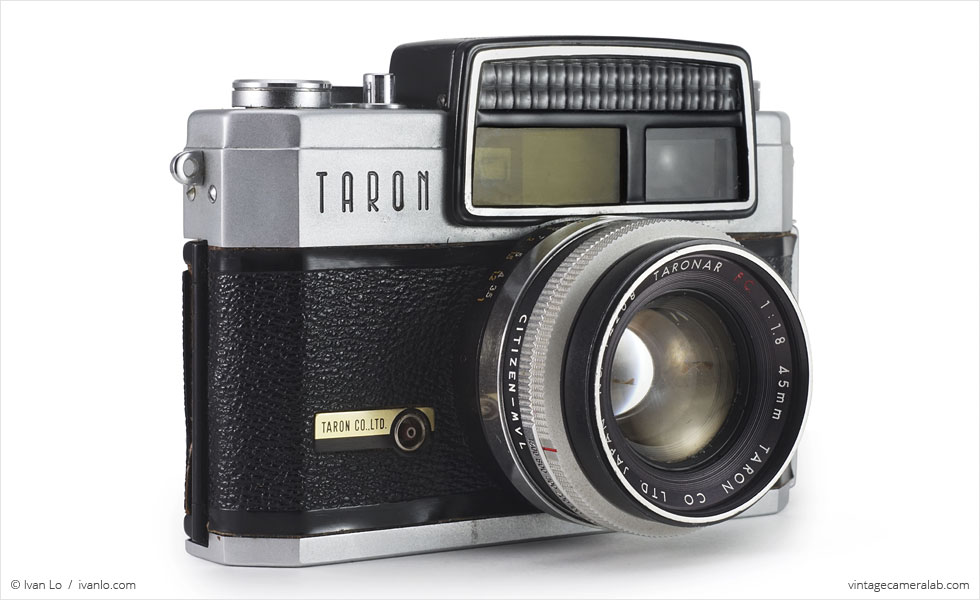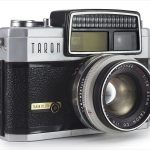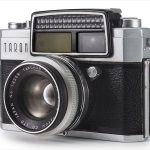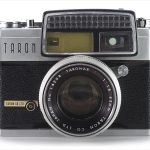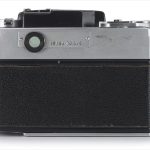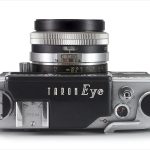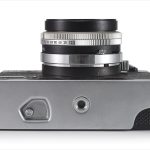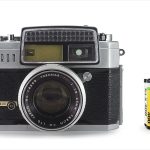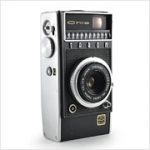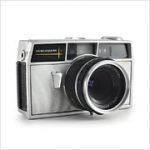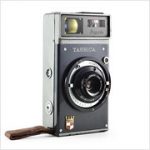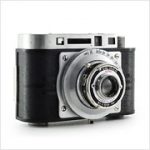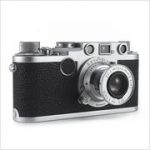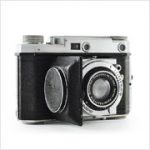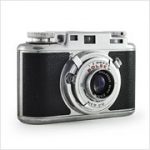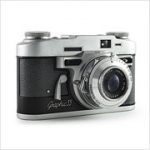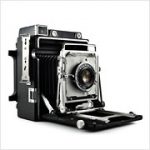Taron Eye Specifications
| Manufacturer: | Taron Co., Ltd. |
| Origin: | Japan |
| Made in: | Japan |
| Introduced: | 1960 |
| Type: | Rangefinder |
| Format: | 135 Film |
| Dimensions: | 13.7 x 9.5 x 7.3 cm |
Taron Eye Overview
The Taron Eye is a premium 35mm rangefinder camera debuted in 1960 by Taron. The Eye is the predecessor to the very similar Taron Eyemax that was introduced shortly afterwards. However, unlike the Eyemax which came with a choice of two lenses with different maximum apertures, the Eye appears to have only been offered with the relatively high-end 45mm f/1.8 Taronar lens.
Unlike other cameras which have standalone dials for film speed, shutter speed, and aperture, the Eye incorporates all three into a pair of knurled metal rings on the lens barrel. The film speed is set by manipulating just the forwardmost ring while turning them both together allows the user to choose between various preset shutter speed and aperture combinations. A self timer and flash sync mode selector are found at five and four o’clock, respectively and a focus ring with a small arm surrounds the very base of the lens. A flash sync terminal surrounded by a tiny golden plate with the words “Taron Co., Ltd.” is located just next to the lens barrel.
Dominating the Eye’s top plate is the blocky rangefinder and selenium meter housing with an integrated cold shoe adapter. A film rewind knob is on one side while the frame counter, threaded shutter button, and film advance lever are on the other. The film door release latch is positioned directly underneath the strap lug on the user’s left hand side of the camera while the film rewind release button and tripod socket are on the bottom plate.
Taron was never quite on the cutting edge of technology or quality but I definitely appreciate how the Eye’s design stands out amongst other Japanese rangefinders from the 1960s like the Konica Auto S and the Minolta Hi-Matic. The eccentric looks and unconventional design, however, come at a cost. The aperture/shutter speed selection process is fairly clumsy and the bulkiness of the rangefinder housing directly interferes with the film rewind knob’s rotation. Still, nobody’s perfect and if you can’t be perfect, you might as well be interesting.
Find your very own Taron Eye on eBay.
McKeown, James M. and Joan C. McKeown’s Price Guide to Antique and Classic Cameras, 2001-2002. (Grantsburg, WI, USA: Centennial Photo Service, 2001), p 630.

